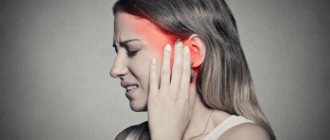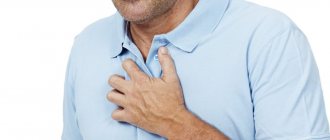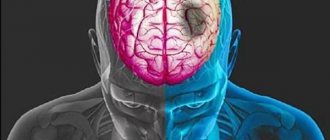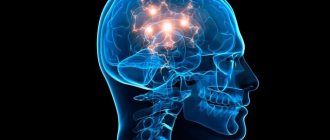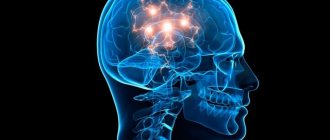Local therapist
Ablyazov
Irshat Ravilevich
20 years of experience
Local therapist of the highest category. Member of the Russian Scientific Medical Society of Therapists.
Make an appointment
The common cold is the colloquial name for a whole group of acute inflammatory diseases of the upper respiratory tract. Hypothermia is only one of the reasons that provoke their appearance. But in most cases, we associate such a disease with hypothermia. This is because most often it occurs in the cold season, when the body is weakened and exhausted, and people spend most of their time indoors, exchanging viruses and bacteria. But the medical record of a patient with a cold usually indicates the official name of the disease - ARVI (acute respiratory viral infection), or ARI (acute respiratory disease).
Another popular expression is a cold on the lip. This is an exacerbation of a herpes virus infection, which can also partly manifest itself against the background of hypothermia and a decrease in the body’s protective functions.
How can you catch a cold?
The main route of transmission of infection is airborne droplets. When a sick person coughs, sneezes, and even breathes, they release many viruses or bacterial cells into the air. Inhaling contaminated air, a healthy person encounters an infection that seeks to gain a foothold on the mucous membrane of the respiratory tract. If the concentration of pathogens in the air is low (the room is well ventilated, the distance between sick and healthy is several meters), and a person has a strong immune system, he may not get sick. But if the sick person is too close, the air is dry, and the body is weakened by stress, overwork, chronic diseases, the probability of transmitting the infection is almost 100%.
Sometimes you can become infected with ARVI through household items (towel, cup, spoon) if you use them immediately after a sick person.
You can become infected with herpes, which causes cold sores, through contact with a sick person: shaking hands, kissing, sharing objects and utensils.
Signs and symptoms of a cold
ARVI is characterized by a slow onset of the disease: first there is weakness, a slight sore throat or other symptoms that gradually intensify. This is one of the signs by which a “common” cold can be distinguished from the flu. The latter is characterized by a sudden and rapid onset of the disease.
Signs of a cold appear several hours or days after infection - the incubation period can reach 2 days. At this time, the person does not yet realize that he is sick, but he can infect others.
Main symptoms of a cold:
- sore and sore throat;
- hoarseness of voice;
- cough, sneezing;
- nasal congestion, runny nose, lacrimation;
- fever, chills;
- headache;
- enlarged lymph nodes;
- pain and aches in muscles, joints;
- lack of appetite;
- insomnia or, conversely, drowsiness.
In some cases, signs of mild digestive upset may appear.
A person does not necessarily have to have all the symptoms of a cold at once: a cough or runny nose may appear on the 2-3rd day. Also, adults can have a cold without fever or with a slight increase in temperature within 37.3–37.5°. A cold in a child almost always occurs with a high fever and pronounced symptoms, often with signs of intestinal distress.
The draft gives me a headache. Symptoms of the disease
The first symptoms of illness appear soon after exposure to the provoking factor. The consequences of hypothermia develop acutely, the clinical picture increases rapidly. The sooner the patient is given first aid and treatment is started, the higher the chances that unpleasant symptoms will pass without a trace and will not affect the usual rhythm of life.
If your head is blown, the following symptoms may appear:
- weakness and aches throughout the body;
- headache - sensations similar to symptoms of migraine and often affect only the left or right side of the skull. It may seem that the pain is concentrated not inside, but at the roots of the hair. In many patients, it shoots in the temples and radiates to the crown or back of the head;
- increase in body temperature. Sometimes this is preceded by signs of hypothermia - muscle tremors, rapid breathing and pulse, apathy;
- dizziness, feeling of heaviness throughout the body, decreased performance;
- severe headache may be accompanied by tinnitus and a feeling of pulsation;
- short-term, but sharp and severe pain in the forehead, nose, cheeks and chin. These signs may suggest damage to the trigeminal nerve;
- redness of the eyes, watery eyes;
- chills, violent reaction to light, discomfort throughout the body;
- changes in blood pressure.
The list of manifestations of a cold head can hardly be called specific. The listed signs are characteristic of a number of diseases of blood vessels, internal organs and systems. You should not try to deal with individual symptoms of the disease on your own; it is better to initially seek help from professionals. This will not only reduce the risk of complications, but will also allow timely detection of the onset of pneumonia or other dangerous conditions in the patient.
Causes of colds
The main cause of ARVI is a viral infection. Dozens and even hundreds of different viruses can cause the disease: rhinoviruses, adenoviruses, reoviruses, etc. When they get on the mucous membrane of the nose and throat, they begin to actively multiply.
Less commonly, the culprit is a bacterial infection, predominantly streptococcal. But in most cases, it appears at a time when the body is already weakened by the activity of the virus. In this case, complications arise - tracheitis, bronchitis, pneumonia.
Contact with a sick person is one of the most common routes of transmission of infection. Unfortunately, a person cannot always protect himself and protect himself from it: you can become infected from a colleague at work, on public transport, or in a store.
A person can “self-infect” if a source of infection is already present in the body, but the immune system restrains it and prevents the development of the disease. If the immune system weakens, the infection gets out of control, leading to the onset of illness.
One of the main causes of colds is a decrease in the activity of the immune system, which is observed under the following circumstances:
- hypothermia of the body - complete or local (if you drink ice water in the heat, wet your feet in the cold);
- chronic stress;
- overwork;
- the presence of chronic infectious diseases;
- poor nutrition, deficiency of vitamins and microelements;
- abuse of drugs, their uncontrolled use;
- sedentary lifestyle;
- constantly being in a room with a large number of people.
In this case, the immune system is forced to come into daily contact with a large number of different viruses and bacteria, and sooner or later its resource is exhausted.
One of the factors in the development of ARVI is dry and warm air: the mucous membrane of the nasopharynx dries out, and it becomes easier for pathogens to gain a foothold on it. Therefore, as a preventive measure, it is recommended to ventilate the room more often, especially if there are always a large number of people in it.
Bad habits (smoking, alcohol abuse) also weaken the body and increase susceptibility to viruses. People living in environmentally unfavorable neighborhoods suffer from colds more often: a large number of chemicals in the air irritate the mucous membranes of the respiratory system, which also makes people susceptible to infections.
Causes of pathology
You can catch a cold on your back in a draft or in short outerwear.
Most often your back gets cold in the area of the shoulder blades in the summer in hot weather. People wear clothes that are open at the back, so if there is a cool breeze blowing outside, it can cause pain.
A sharp change in temperature, for example, while under air conditioning, can be a provoking factor.
Often your back gets blown when you are in a draft. A person sometimes catches a cold when his muscles are warmed up after training.
Cold treatment
Having a cold is very unpleasant: many people become practically helpless, get tired quickly, and the manifestations of the disease interfere with everyday life.
How to quickly cure a cold? This question interests every patient from the moment the first symptoms appear. The first thing to do is to give the body a rest: only in this case will it be able to mobilize all its strength to fight the infection. This is why all doctors recommend bed or semi-bed rest. Rest will help relieve symptoms and reduce the likelihood of complications.
There is no universal cure for colds: the treatment regimen depends on the type of pathogen, the list of symptoms, the characteristics of the disease, and the state of the immune system. One patient may need warm drinks and bed rest, while another will have to be hospitalized. That is why it is important not to self-medicate, not to take all advertised drugs at random, but to consult a doctor. A specialist will objectively assess your condition and recommend the most effective treatment tactics for a cold.
Also, the doctor will be able to recognize the first signs of complications in time and prescribe the necessary medications in time to avoid serious consequences for the body.
You can easily get rid of colds and flu if you follow all your doctor's recommendations. But it is important to remember that you won’t be able to defeat the disease in one day: on average, a cold lasts a week - that’s how long the body needs to cope with the pathogen and recover a little. Even if the symptoms of the disease have decreased or completely disappeared after the first 2-3 days, this is not a reason to relax. Stopping treatment may lead to complications or reactivation of the infection.
Pain under the right shoulder blade
Pain under the right shoulder blade is common, but self-diagnosis, as with pain under the left shoulder blade, is quite problematic. Pain under the right shoulder blade can be a sign of life-threatening conditions, and only a doctor can adequately rule out serious causes of pain.
Causes of pain under the right shoulder blade.
- Cholecystitis. Gallstone disease or acute cholecystitis can lead to acute pain under the right shoulder blade. The pain may also radiate to the right shoulder. As a rule, gallstone disease requires surgical treatment (removal of the gallbladder).
- Myocardial infarction (angina) can cause pain in the shoulder, under the right shoulder blade, in the right shoulder, in the neck. With an aortic aneurysm, pain may radiate to the back. Pain in such conditions is usually acute, intense and requires emergency hospitalization.
- Liver diseases
- Inflammatory processes, liver infections, and other liver damage can lead to pain under the right shoulder blade. Bacterial infections can lead to the formation of pockets of pus in the liver, and this will be accompanied not only by pain, but also by fever and general malaise. Liver cancer also often leads to pain under the right shoulder blade and in the shoulder. Liver cirrhosis, especially decompensated liver cirrhosis, can lead to fluid accumulation in the abdominal cavity and lead to pain under the shoulder blade and shoulder.
- Mammary cancer
- Breast cancer is one of the most common types of cancer and often causes pain in both the right and left subscapularis.
- Arthritis of the shoulder joint can cause pain under the right shoulder blade.
- Biomechanical reasons. Poor posture or prolonged static loads, such as working at a computer, especially in the wrong position, can cause muscle spasms, which will manifest as pain under the right shoulder blade.
Which doctor should I make an appointment with for a cold?
Treatment of uncomplicated acute respiratory viral infections is carried out by a general practitioner or family doctor. In difficult cases, it may be necessary to involve highly specialized specialists:
- An immunologist if a person suffers from respiratory diseases more than 2-3 times a year, and each time with complications.
- An otolaryngologist if there are signs of tonsillitis, sinusitis, or inflammatory ear diseases.
- A pulmonologist if wheezing is heard in the lungs.
- Gynecologist if the patient is pregnant. It will help assess the potential risks to the fetus and choose the safest drugs for treating colds in a pregnant woman.
- Another specialized specialist if a person has a serious chronic disease that may be aggravated by ARVI.
In our clinic JSC "Medicine" in the center of Moscow, qualified therapists receive treatment, who regularly replenish their professional knowledge and participate in conferences to exchange experience. They know how to effectively treat colds using modern medications. Doctors are aware of all modern treatment methods, new products on the pharmaceutical market, and regularly monitor the results of clinical trials of medications. They will help you choose the most effective and comfortable treatment strategy for the patient. If necessary, consultations with specialized specialists and additional examinations are scheduled, which you can also undergo at our medical center.
We are located in the Central District of Moscow (2nd Tverskoy-Yamskaya Lane, building 10), close to the Mayakovskaya, Chekhovskaya, Belorusskaya, Novoslobodskaya, and Tverskaya metro stations.
Don't delay treatment - make an appointment with a doctor. To do this, just call or fill out a form on our website, indicating your contact e-mail.
If your health does not allow you to come to your appointment, you cannot bring down your high temperature or you have difficulty breathing, you can call an ambulance by calling +7 (495) 775-73-60.
If you have a cold neck, see a doctor soon!
A full examination will allow you to determine the root cause of myositis. After all the necessary diagnostic measures have been carried out, the specialist will determine the cause of inflammation of the cervical muscle fibers and prescribe the correct therapy. Based on the results of the studies, the doctor may refer the patient to a rheumatologist, and in the case of an acute form of the disease, he will not exclude the possibility of surgical intervention.
Unique techniques and innovative equipment in “Hello!” clinics allow you to quickly and accurately make the correct diagnosis, and most importantly, correctly prescribe the necessary course of effective therapy.
In the network of healthy spine clinics “Hello!” We employ certified doctors with many years of experience. Among them are doctors and candidates of medical sciences, professors and doctors of the highest qualification category, teachers of the department of osteopathy and manual therapy of the Russian Peoples' Friendship University. All of them have extensive experience as inpatients in leading medical and preventive institutions in Moscow and form the strongest team of experts in the field of diagnosis and treatment of diseases of the musculoskeletal system.
How to treat a cold at home
A common uncomplicated cold can be cured at home if you follow a few important rules:
- Maintain bed rest. Even if you don't have a high fever, remember two things: your body needs strength to fight the disease, and you are a potential threat to others. Therefore, there is no need to be a hero when going to work: you will not be able to work effectively, you will increase your own recovery time and infect your colleagues.
- Drink more warm liquids. Viruses and bacteria release toxins, which cause unpleasant symptoms: muscle aches, headaches, etc. A large amount of liquid will help stabilize the temperature, flush out harmful substances from the body, and prevent the mucous membranes from drying out.
- Ventilate the room well and maintain comfortable air humidity. This is especially true during the heating season, when the indoor air is dry.
- Take measures to help relieve symptoms - rinse your nose, gargle.
- Do not take the first cold pill you come across in the hope that it will help you get better faster.
The left side of the face blew out, how to treat it. Neuritis of the facial (trigeminal) nerve
If the left side of the head or the right is blown, there may be inflammation of the nerve innervating the facial muscles on one side of the face. As a result, their weakness (paresis) and even complete paralysis of facial movements develops.
People with an anatomically narrow bone canal are more prone to inflammation of the trigeminal nerve. Due to deterioration of blood supply and pinched nerve, tunnel syndrome is observed.
Pathology occurs due to the fact that the head is blown by the wind or blown by a fan. People sitting near air conditioning or constantly exposed to drafts are at high risk.
Meningitis
Meninitis does not occur from hypothermia; it is infectious or bacterial in nature. However, if an adult or child constantly has a cold head, this indicates a decrease in immunity. This means that the body is especially susceptible to various viruses and bacteria.
Meningitis is a very dangerous disease, so if, after blowing through the right or left side of the head, you experience pale skin, weakness, lethargy, anxiety, drowsiness, or severe headache, you should urgently consult a doctor who will prescribe medication treatment.
Otitis
Otitis is a group of inflammatory diseases of the ear, which manifests itself with the following symptoms:
- pain when opening the mouth;
- pain in the ear;
- swelling and redness of the ear;
- pus from the ear;
- increased body temperature;
- itching and congestion in the ear.
If all these symptoms occur after the back of the head or neck has been blown, you should urgently consult an otolaryngologist.
How to treat a cold
Taking an advertised cold powder is the first thing that comes to the mind of a sick person. But it is important to remember that these remedies are not suitable for everyone. Typically, such formulations contain large amounts of ascorbic acid and additives, including sugar or sweeteners, flavorings. Therefore, people with gastrointestinal diseases, diabetics and allergy sufferers should not use such products without first consulting a doctor.
Even if there are no strict contraindications, remember that the drug will help reduce the intensity of symptoms, but not cure the disease in one day.
Price is not always an indicator of quality. Pharmacies have inexpensive but effective cold remedies. But they should be taken only on the recommendation of a doctor, and not on the advice of a pharmacist.
An uncomplicated cold with moderate symptoms often does not even require medication. But it is necessary to monitor the recovery process in order to start drug treatment in time if complications arise.
Taking antiviral drugs is justified if the infection is severe, as well as with a confirmed diagnosis of influenza. Antibiotics for viral colds are generally ineffective because they do not affect viruses.
If an adult’s cold temperature is below 38–38.5°, there is no need to bring it down. An increase in temperature indicates that the body is actively fighting infection. But if it rises to 39° and above, a person can hardly tolerate it, he should take an antipyretic. Severe headaches can be relieved with painkillers if you are not allergic to them.
The temperature blew in a draft, how to treat it. Ethnoscience. Recipes
In the case of a “blown back,” traditional healers offer many options for relieving pain and inflammation, but only in combination with traditional therapy will the use of these home methods give truly amazing results.
Dry salt compress
Pour sea salt heated on a baking sheet in the oven or oven into a canvas bag and apply to the sore spot. To avoid thermal burns, the bag of salt should be wrapped in several layers of thick fabric. As the salt cools, the top layers of fabric must be removed. A salt compress perfectly warms the deep back muscles and increases blood flow to the site of inflammation. After the procedure, you can lightly massage the sore muscle.
Warming the lower back will not always be the correct method of treatment, since pain in the lumbar region may indicate the presence of chronic pathology of the internal organs (kidneys, in women - ovaries, uterus).
Therefore, this method will be safer if the thoracic part of the back is blown; a salt compress should be applied to the area between the shoulder blades.
Cabbage leaf
A universal way to get rid of pain and inflammation. You can apply a whole fresh leaf, secure it and leave it overnight. You can prepare a rub with mustard, horseradish and honey - smear the painful area with the prepared mixture every night, wrap it up and leave it overnight. You can put a mixture of the same components on a whole leaf of cabbage and use it as a compress.
Pepper patches
They can also treat the back, as they are a good distraction, warming agent and improve blood circulation. Modern products contain painkillers, so during the process the patient feels only pleasant warmth, and not an unbearable burning sensation. In addition, the perforation on the patch does not allow the skin to tighten - the glued patch does not cause any discomfort.
Massage
If you have a cold back, massage will help heal and restore the functionality of the sore muscle, especially after taking a hot bath or shower. Contraindications for back massage are severe pain and the presence of any damage to the skin.
Compresses and rubbing
The simplest and most accessible remedy for a cold back is alcohol/vodka rubbing and compresses. It is possible to treat muscle inflammation in this way for a long time, since alcohol in its pure form practically does not cause allergic reactions; when applied topically, it helps to improve the trophism (nutrition) of tissues and metabolic processes in the inflamed area.
During treatment, it is necessary to closely monitor the general condition of the patient. At the slightest sign of an increase in body temperature, which in principle should not happen when you have a cold in your back, you should urgently seek qualified medical help. A consultation with a doctor will also be necessary if all treatment methods within a week have not yielded positive results. And don't forget to dress warmly in cold, rainy and windy weather.
Be healthy!
How to quickly recover with folk remedies
Traditional medicine offers a lot of methods and tips for treating colds. These are various herbal teas and decoctions, compresses, rubbing and other manipulations. But not every folk remedy for colds is effective and safe: some can provoke an allergic reaction, others can lead to the development of complications. Therefore, they must be used carefully, and only as additional methods of treatment. If the attending physician insists on taking medications, you should not abandon them in favor of traditional methods.
The safest are:
- gargling with herbal decoctions (provided there are no allergies);
- rinsing the nose with a weak (0.9%) saline solution;
- anti-inflammatory herbal teas.
It is not advisable to experiment with steam inhalations, compresses and rubbing, especially if the patient has a fever.
Blown neck muscles - treatment
When searching for information about what to do if you have a cold neck, how to relieve pain, and even better, quickly relieve pain, you can come across a lot of messages about the benefits of the Tibetan medical school and folk methods of combating the disease. All known methods of treating myositis are aimed at reducing inflammatory processes in muscle fibers, bringing and maintaining them in a state of rest and relaxation.
One of the treatments for cervical myositis common in the Tibetan medical school is acupuncture combined with manual therapy. It is carried out in several sessions and affects all muscle groups. In addition, acupuncture can significantly improve blood circulation, improve oxygen transport to cells and tissues, and improve muscle tone.
Medical procedures prescribed for cervical myositis are aimed at achieving results such as:
- elimination of pain and inflammation of muscle fibers;
- strengthening muscle tone;
- reduction of muscle spasm;
- fight against stagnation.
Massage and compresses based on decoctions of medicinal plants are popular. Massaging the swollen area is effective if the lymph nodes are not inflamed. Self-massage is carried out in combination with anti-inflammatory gels, medicinal ointments and balms. Such products irritate the skin, relieve spasms and eliminate pain.
Comprehensive treatment in clinics of the “Hello!” network are carried out by doctors in such specialized fields as traumatology and orthopedics, manual therapy and osteopathy, neurology and therapy, physiotherapy and reflexology, as well as specialists from other medical professions in demand among the population.
Colds during pregnancy
What should a pregnant woman do if she has a cold so as not to harm her unborn baby? First of all, you need to see a doctor, even if there is no high fever and the symptoms are mild. A cold during pregnancy can affect the child’s body in different ways, which largely depends on the trimester.
- The first and third are the most dangerous: in the absence of proper treatment or taking certain medications, a viral infection can cause miscarriage, premature birth, and fetal pathologies.
- Colds in the second trimester are less dangerous. But it is worth remembering that pregnant women should not take most medications designed to reduce the intensity of ARVI symptoms.
Also be prepared for the fact that the therapist may prescribe additional tests for the expectant mother and refer her for an emergency consultation with a gynecologist.
Diagnostic measures
For pain on the left, if there is a suspicion of intercostal neuralgia, an electrocardiogram of the heart is done.
The muscles in the area of the scapula can become inflamed for various reasons. The doctor’s task is to determine the true factor that provoked back pain localized in the area of the shoulder blades.
First of all, the doctor carefully palpates the area of inflammation. He needs to determine the most painful areas, as well as detect formations uncharacteristic of muscle tissue.
To confirm the diagnosis and determine the causes of pain, the following laboratory and instrumental tests are prescribed:
- CT, MRI. The techniques are used to identify tumors of all types, as well as signs that accompany the destruction of the nerve sheath.
- Electrocardiography. The study helps to assess the electrical activity of the myocardium. The technique is indicated for suspected intercostal neuralgia, whose symptoms resemble angina attacks.
- Radiology. It is used if there are suspicions of various types of formations in the area of the scapula or respiratory organs.
- Lab tests. The results obtained allow us to determine the existing inflammatory process.
If the need arises, the patient is assigned consultations with other specialists.
Possible complications of colds
The cold itself is not as dangerous as its complications: in the absence of treatment, as well as if a person suffers the disease on his feet, the risk of complications increases several times. The most common option is the addition of a bacterial infection when the body is already weakened by the virus. The virus itself can also cause serious damage to internal organs. Treating a complicated cold is much more difficult and takes longer.
Among the most common complications of ARVI:
- pneumonia (viral or bacterial), bronchitis;
- sinusitis, sinusitis (purulent inflammation of the sinuses);
- otitis (inflammation of the middle ear);
- infectious heart diseases;
- degenerative changes in cartilage tissue.
My head blew in a draft, how to treat it. Help from traditional medicine
How to treat a cold head if you are committed to traditional medicine?
Drink tea with honey and lemon. And also with raspberry jam, which is a natural anti-inflammatory agent. You can drink any vitamin teas and drinks with a high content of vitamin C and microelements (drink made from rosehip, elderberry, viburnum, rowan), any natural juices in a warm form.
Natural stimulants stimulate the immune system very well. For example, lemongrass (relieves mild spastic headaches), ginseng, eleutherococcus, ginger (has a good warming effect), arnica (improves tissue nutrition), echinacea. Additional properties of the herbal immunostimulant that promote recovery are indicated in parentheses. These herbal saviors can also be used as tinctures and tea additives.
Not the least place in self-help for a head cold is therapy with aromatic oils. Eucalyptus, juniper, lavender, spruce, tea tree, lemon oil are all powerful natural antiseptics.
Onions and garlic are very good for treating colds. These phytoncides-containing vegetables can be eaten, inhaled with them, or put their juice in the nose.
Treatment is also necessary for hypothermia of the head. How to treat your head if it is blown? Only as prescribed by the doctor. Typically, immunomodulators and immunostimulants, NSAIDs (non-steroidal anti-inflammatory drugs) are used for this. If a bacterial infection occurs, antibiotics and vitamins are prescribed.
In case of severe damage to the facial nerves, meninges, infectious abscesses, jaw joints, treatment is carried out under the strict supervision of medical personnel in a hospital.
How to recover from a cold
A viral infection is a serious burden on the body, after which a recovery period is needed. In the first days after an illness, it is important not to overcool and avoid contact with new sources of infection.
If the body is strong, the recovery period is almost asymptomatic. Sometimes the patient may complain of increased fatigue. If the body is initially weakened, rehabilitation may take several weeks. A person may be bothered by fatigue, weakness, even headaches and low-grade fever. In this case, it is better to play it safe and consult a doctor to prevent the development of complications.
To help you recover quickly from a cold:
- adherence to rest and sleep patterns;
- proper nutrition, additional intake of vitamins;
- compliance with rules and regulations of hygiene;
- walks in the open air.
Prevention of flu and colds
To prevent the development of ARVI, it is important:
- Maintain a rest regime and do not overwork. If you have a stressful job, find a suitable way to reduce stress: walks, exercise, hobbies.
- Eat foods rich in vitamins and microelements.
- Ventilate the premises, maintain optimal temperature and humidity.
- During a surge in cases, avoid crowded places.
- Wash your hands with soap and avoid touching your face with dirty hands unless necessary.
- Timely detect and treat chronic diseases.
- Get rid of bad habits.
Preventive measures
Multivitamins help support the immune system
There are a number of measures that can be taken to prevent the development of back pain under the shoulder blade. Doctors advise the following:
- prevent hypothermia - local and general;
- do not exceed the physical activity recommended by age;
- promptly eliminate problems with poor posture;
- to live an active lifestyle;
- eat properly and nutritiously.
If your work activity involves prolonged sitting, it is advisable to do a little warm-up regularly. Exercises can be very simple: turns right/left, bends, body rotations and others. Exercises in the pool, horseback riding - everything that helps strengthen the spine and joint-muscular system will bring benefits.
Frequently asked questions about colds
What to do if the temperature rises without signs of a cold?
A high temperature is evidence that something is wrong with the body. Usually it indicates the presence of an inflammatory process, not necessarily respiratory. An increase in temperature can be caused by injury, severe overheating of the body, tumor processes, and brain diseases. In this case, you need to consult a doctor and undergo additional examination to determine the exact cause of this reaction of the body.
Cold without fever. What to do?
A mild cold can occur without fever or with a slight increase to 37–37.2°. This is not a reason to ignore the disease: the body still needs strength to fight the pathogen. In this case, it is enough to rest more, avoid crowded places, and ventilate the room.
If symptoms do not go away within 3-5 days and the temperature remains unchanged, you should consult a doctor.
Can a cold go away without symptoms?
Symptoms may be mild or only 1-2 signs of the disease may be noted. If after 2-3 days your health has not worsened, there is no need to worry. If the temperature is elevated or additional symptoms appear, you should consult a doctor.
Do you need antibiotics for a cold?
Antibiotics are not needed for a viral infection; they are recommended for treating a bacterial infection. You cannot take antibiotics on your own: the drug, dosage, and course duration must be prescribed by a doctor.
Is it possible to eat ice cream when you have a cold?
Not recommended. Hypothermia of the throat further reduces local immunity, and the viral infection becomes more active. In the event of a bacterial infection, milk fat and sugar can become an excellent breeding ground for bacteria.
Can a cold cause complications?
Maybe if you ignore your doctor's advice. The infection often spreads to the lower respiratory tract. In this case, treatment will take several weeks and hospitalization may be required. Therefore, it is important, when the first signs of a cold appear, not to go to crowded places, to rest more and not to burden the body.
There was a draft, how not to get sick. Myositis due to draft
The simplest superficial damage caused by a cool breeze in the heat is the so-called myositis, or, in popular parlance, “blown neck.” A condition familiar to many: muscles ache, sometimes the sensation spreads to the shoulder area, turning your head is unpleasant and you don’t want to. If it gets really bad, the neck stops moving altogether. And when someone calls you behind you, you have to turn around with your whole body. “With myositis, the muscle fibers swell, it spasms, pinches the nerve endings, and discomfort occurs,” says Yulia Zhivava.
But usually the owner of the disease does not ask the question: “Why does it hurt, so much?” - but is looking for ways of salvation. And the majority, oddly enough, act to their own detriment: they go for a massage or smear themselves with something intoxicating. “This is what you shouldn’t do – warm the sore spot with compresses or appropriate ointments,” continues Yulia. – The muscle with myositis is inflamed, swollen, venous outflow is impaired. In general, heat will only make the process worse. Treatment requires an anti-inflammatory ointment, preferably with an analgesic effect; Decongestants and venotonic drugs for topical use are suitable.”
If the discomfort does not go away within two or three days, and even more so becomes stronger, it’s time to see a neurologist: acute, rather than dull, nagging pain can signal inflammation of the nerve roots located between the vertebrae. When the illness touches the spine, don't expect anything good.

